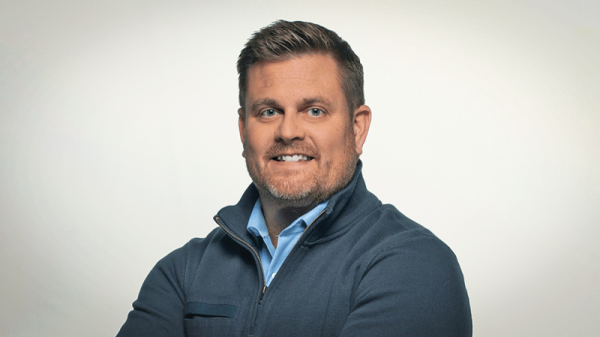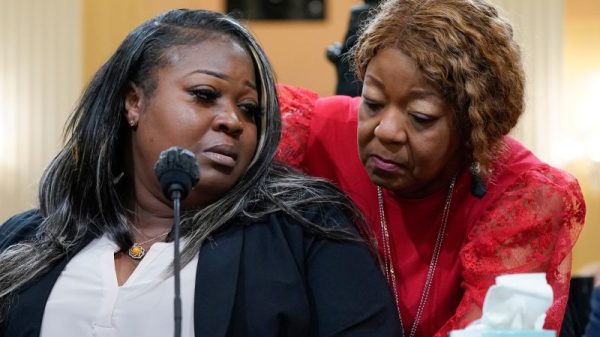Ameris Bancorp (NYSE:ABCB), a regional bank holding company, reported a strong third-quarter performance during its recent earnings call. The company announced a net income of $99.2 million, or $1.44 per diluted share, with an adjusted net income of $95.2 million, or $1.38 per diluted share. These figures include adjustments for a gain from the sale of mortgage servicing rights and minor hurricane-related expenses. The bank’s executives, CFO Nicole Stokes and CEO Palmer Proctor, also outlined a positive outlook for loan and deposit growth, and the renewal of a stock buyback plan, signaling confidence in the company’s future.
Key Takeaways
Ameris Bancorp reported a robust net income of $99.2 million for the third quarter, with tangible book value per share growing by 19% annually.
The company maintains strong capital ratios, with a net interest margin of 3.51%.
Ameris anticipates mid-single-digit growth for both loans and deposits going into 2024.
A $100 million stock buyback plan has been renewed through October 2025.
Management remains focused on organic growth and may consider strategic acquisitions if they offer significant value.
Company Outlook
Ameris expects to maintain mid-single-digit loan and deposit growth into 2025.
The bank is strategically shifting towards relationship banking to foster deposit growth.
Falling interest rates are seen as a potential boost to mortgage operations and net interest income.
Bearish Highlights
The bank reported slight margin compression in the third quarter.
Competitive deposit movements are a concern, especially in response to Federal Reserve actions.
Bullish Highlights
Ameris achieved strong growth in net interest income and tangible book value per share.
The company’s diversified earning asset base grew 7.6% annualized.
Executives expressed optimism about the growth potential in premium finance and mortgage operations.
Misses
There were no significant misses reported during the earnings call.
Q&A Highlights
The management team discussed the impact of interest rate changes on net interest margin and growth prospects.
Ameris is focused on organic deposit growth, with a significant increase in core deposits.
The company is open to M&A opportunities but is primarily focused on organic growth.
In summary, Ameris Bancorp’s third-quarter performance showcased strong financial health and a positive outlook for future growth. The management team remains vigilant about market conditions and competitive pressures but is optimistic about leveraging economic tailwinds to enhance shareholder value. The bank’s focus on relationship banking and prudent capital management positions it well for sustained performance in the coming quarters.
InvestingPro Insights
Ameris Bancorp’s (ABCB) strong third-quarter performance is further supported by recent data from InvestingPro. The company’s market capitalization stands at $4.21 billion, reflecting its substantial presence in the regional banking sector.
One of the most striking InvestingPro Tips highlights that Ameris Bancorp has maintained dividend payments for 11 consecutive years, underscoring the company’s commitment to returning value to shareholders. This aligns well with the management’s recent renewal of a $100 million stock buyback plan, as mentioned in the earnings call.
The bank’s financial health is further evidenced by its impressive revenue growth. InvestingPro data shows a revenue growth of 7.12% over the last twelve months, with a notable quarterly revenue growth of 21.82% in Q2 2024. This robust growth supports the company’s optimistic outlook for mid-single-digit growth in loans and deposits going into 2024.
Additionally, Ameris Bancorp boasts a strong operating income margin of 45.68%, which reflects its operational efficiency and ability to generate profits from its core banking activities. This efficiency is likely contributing to the bank’s ability to maintain its growth trajectory and capital return programs.
It’s worth noting that InvestingPro offers 9 additional tips for Ameris Bancorp, providing investors with a more comprehensive analysis of the company’s financial position and market performance.
While the article highlights the bank’s strong performance, it’s important to consider that InvestingPro Tips also indicate that Ameris Bancorp is trading at a high P/E ratio relative to near-term earnings growth, with a PEG ratio of 2.93. This suggests that investors should carefully evaluate the stock’s current valuation in light of its growth prospects.
In conclusion, the InvestingPro data largely supports the positive narrative presented in Ameris Bancorp’s earnings call, while also providing additional context for investors to consider.
Full transcript – Ameris Bancorp (ABCB) Q3 2024:
Operator: Good day, and welcome to the Ameris Bancorp Third Quarter Earnings Conference Call. All participants will be in a listen-only mode. [Operator Instructions]. After today’s presentation, there will be an opportunity to ask questions. [Operator Instructions]. Please note this event is being recorded. I would now like to turn the conference over to Nicole Stokes, Chief Financial Officer. Please go ahead.
Nicole Stokes: Thank you, Danielle, and thank you to all who have joined our call today. During the call, we will be referencing the press release and the financial highlights that are available on the Investor Relations section of our website at amerisbank.com. I’m joined today by Palmer Proctor, our CEO; and Doug Strange, our Chief Credit Officer. Palmer will begin with some opening general comments, and then I’ll discuss the details of our financial results before we open up for Q&A. But before we begin, I’ll remind you that our comments may include forward-looking statements. These statements are subject to risks and uncertainties. The actual results could vary materially. We list some of the factors that might cause results to differ in our press release and in our SEC filings, which are available on our website. We do not assume any obligation to update any forward-looking statements as a result of new information, early developments or otherwise, except as required by law. Also during the call, we will discuss certain non-GAAP financial measures in reference to the company’s performance. You can see our reconciliation of these measures and GAAP financial measures in the appendix to our presentation. And with that, I’ll turn it over to Palmer for opening comments.
Palmer Proctor: Thank you, Nicole, and good morning, everyone. I want to thank you all for taking the time to join our call today. I’m very pleased with the top-of-class third quarter financial performance we reported yesterday as well as our outstanding year-to-date metrics. As the fundamentals remained strong in the quarter, as Ameris continues to be a peer leader in most key metrics. As you can see, we remain focused on growing tangible book value per share as evidenced by our 19% annualized growth rate for the quarter. Over the last five years, our tangible book value has increased by a notable 85%. Our profitability remains strong with an above PPNR ROA right at 2%, adjusted ROA of $1.43 and return on tangible common equity of 15% in the quarter. Capital continues to grow with our TCE ratio now in the double-digits at a healthy 10.2%. Common equity Tier 1 is also strong at over 12%. These strong capital levels give us a lot of optionality as we look forward to explore additional growth opportunities within our attractive Southeastern footprint, as well as increased capital returns. We improved our CRE concentration to capital ratio down to 270%, which is a nice move down from our 295% peak a couple of years ago. Our allowance for credit losses was stable in the quarter, representing a healthy 160 coverage ratio. Our third quarter margin of 3.51% remained well above peer levels this quarter with our net interest income continuing to increase. This strong margin has benefited from our granular core deposit base and our DDA composition, which we were able to keep above 30% in the quarter, another top of class level. We have a proven culture of expense control, and we’re able to reduce our efficiency ratio to 54% from 55% last quarter. Also during the quarter, we executed our second MSR sale of the year, this time selling most of our Ginnie Mae MSRs. This sale resulted in a pre-tax gain of over $5 million and helped to reduce our Ginnie Mae non-performing loans, which fell over 90% in the quarter. Finally, our earning asset base is diversified among both geographies and product types, and our average earning assets grew 7.6% annualized in the third quarter. Our Southeast footprint is strong, which should allow us to enjoy continued growth when appropriate as well as positive operating leverage. These highlights, along with our focus and discipline, are really what drives our optimism for the remainder of this year and into 2025. I also wanted to mention that several pockets of our franchise were impacted by the two recent Southeastern storms, Helene and Milton, and I’m very proud of how our team responded before, during and after the storm, taking care of our franchise and our customers. Fortunately, for us, most of our locations did not experience significant damage, and we’re back open in short order. In addition, I was pleased that the Ameris Foundation was able to commit funds to the American Red Cross to support recovery efforts in our impacted markets. Overall, I’m very proud of our team and the third quarter performance, which remains industry-leading and above peer levels. The future is bright here at Ameris, and we appreciate the continued support of our customers, teammates and shareholders. I’ll stop there and now turn over to Nicole to discuss our financial results in more detail.
Nicole Stokes: Great. Thank you, Palmer. For the third quarter, we’re reporting net income of $99.2 million or $1.44 per diluted share. As Palmer mentioned, we recorded a $5.2 million gain on the sale of the second portion of our MSR portfolio in the quarter, and we also reported about $150,000 of hurricane-related expenses. Excluding these items, our adjusted net income was $95.2 million or $1.38 per diluted share. Two signs of our strong core performance this quarter is our adjusted return on assets, which improved to 1.43% and our adjusted return on tangible common equity that improved to 15%. We remain focused on growing shareholder value, and we added $1.72 per share to tangible book value this quarter. That’s an annualized growth rate of about 19.1% to end the quarter with tangible book of $37.51 per share. We didn’t repurchase any stock this quarter, but the Board did renew our buyback plan for another $100 million through October of 2025. Our interest income for the quarter increased $7.8 million over last quarter while our interest expense only increased 5.7%, allowing an increase in net interest income of about $2.1 million. However, as I mentioned last quarter, we had about $2.3 million of non-recurring bond interest income in the second quarter. So considering that known anomaly, our core net interest income actually grew about $4.4 million for the quarter or 8% growth linked quarter-over-quarter. We continue to maintain a strong margin at 3.51%. Remember, last quarter, we had that 4 basis points of one-time margin expansion from the bond portfolio that I just mentioned that we did not expect to reoccur this quarter. So we really only had 3 basis points of margin compression, which was right in line with our guidance on margin kind of bouncing up or down around a few basis points each quarter, but maintaining right around 3.50%. The 3 basis points of core margin compression was related to our funding mix this quarter and it was only slightly impacted by our asset sensitivity. During the quarter, we reported a $6.1 million provision for credit losses, maintaining our coverage ratio at 1.60% of loans and improving to 336% of portfolio NPLs. While I’m on credit, let me mention that with the sale of our Ginnie Mae servicing assets, our total non-performing assets as a percentage of total assets improved from 74 basis points down to just 44 basis points, and our charge-offs improved again this quarter to just 15 basis points, compared to 18 basis points last quarter. Adjusted non-interest income decreased about $6.7 million this quarter, mostly in the mortgage division due to the decrease in production and a reduced gain on sale margin of 2.17%, which was down from 2.45% last quarter. We continue to focus on efficiency, and our adjusted efficiency ratio improved down to 54.25% in the third quarter. Total adjusted non-interest expense decreased $4.6 million in the quarter, mostly in the mortgage division related to the variable comp from the decreased production. On the balance sheet side, we ended the quarter with total assets of $26.4 billion, compared with $25.2 billion at the end of the year. Total earning assets ended at $24.3 billion, and our average earning assets increased 7.6% annualized from the second quarter to the third quarter. Loans both held for sale and portfolio loans were fairly flat quarter-over-quarter. However, the average balance of portfolio loans during the quarter increased $203 million from last quarter. Much of the increase in two key balances were from the summer seasonality in our warehouse lines, and those fluctuate day-by-day. So they happened to end the quarter down about $85 million. But total loan production in the quarter was $509 million, the highest we’ve seen in the past four quarters. Many of these loans will fund in future quarters and are at a blended rate of a little over 9%, which will be accretive over our current loan yields of about 6%. For the year-to-date period, portfolio loans have increased $695.7 million or 4.6% annualized and deposits have increased $1.17 billion or 7.6% annualized. This success has improved our loan-to-deposit ratio and our non-interest-bearing deposits still represent a healthy 30% of total deposits, and our brokered CDs represent only 7% of total deposits. We continue to anticipate 2024 loan and deposit growth in the mid-single-digits and expect that deposit growth will continue to be the governor on loan growth. And with that, I’ll wrap it up and turn the call back over to Danielle for any questions from the group.
Operator: Thank you. We’ll now begin the question-and-answer session. [Operator Instructions]. The first question comes from Will Jones from KBW. Please go ahead.
Will Jones: Nicole, I wanted to start on the margin. I know we kind of talked last quarter a little bit about how plus you were. If you guys continue to see good growth, that, that maybe you’re willing to give a little bit on NIM percentage as long as the trade-off was still the NII dollars grow and then we kind of saw that come through a little bit this quarter. Just curious if you still carry that same kind of mindset as we roll through the balance of the year and into early 2025, or if there’s a point where you feel like you may need to get a little bit more defensive on the margin?
Nicole Stokes: No, I think that’s a great point. And no, our guidance there really hasn’t changed. I mean, we feel like we have a strong healthy margin even at 3.51% is above peer and a healthy margin. And we’re very, very proud of our deposit base, and we will protect that deposit base, and then we will also look to continue to grow that. And when we think about margin expansion, we’re still right at just slightly asset sensitive or about as neutral as we can be. So any margin expansion that we come — that we see coming in is going to come from growth in earning assets. So we continue to look for that growth in NII and focus on that, which again, we had, like you mentioned, about 8% linked quarter growth in NII this quarter, which was strong. So even though we had a little bit of margin compression, we still continue to see that NII growth, and that continues to be our focus.
Will Jones: Yes, okay. That’s helpful. And just while we’re on the margin, could you just remind us all where you guys stand with the index or higher beta deposits, and then just maybe an early read on how you feel like deposit betas could trend as we start the season cycle?
Nicole Stokes: Yes. So we have very few, less than 2% that are indexed deposits. However, we have a large portion that behave like indexed deposits. So — and the approach that we’ve taken is that those higher beta deposits on the way up or the higher beta deposits on the way down. We were very aggressive with reducing deposits the day after the Fed moved. Our operations team did a great job implementing all of those changes. And we really so far, knock on wood, have not seen any — I think the big outlier could be is that if we start seeing competitors not move, and what we’ve seen so far is that our competitors moved as well. So we don’t have a lot of market disruption from anybody not being able to move, and so we don’t have any reason to believe that we wouldn’t be able to continue that with Fed cut to continue to have a strong beta on the downside.
Will Jones: Yes. Okay. Very helpful. Thanks for that. And then, Palmer, maybe just one for you. I know we have similarly the capital conversation most every quarter, and I certainly can appreciate you guys very, very thoughtful approach and prudent approach to just preserving capital. But at the same time, this is really a pretty powerful earnings environment for Ameris. You guys are recruiting capital at a nice clip nearly every quarter. Is there a point in time where, I don’t think aggressive is the right term, but maybe you think more opportunistically about deploying some of your excess capital?
Palmer Proctor: Absolutely. I don’t think that time is now, though. I think, to your point on being prudent and disciplined, we remain in that camp for now. I think until we get a little more clarity, get post-election, see how things shake out. But it’s a good problem to have, right? So we’re very pleased with where the capital levels are. It gives us, once again, a lot of that optionality, I talked about earlier. So for now, we’re kind of in a capital building mode and then we’ll see how what kind of clarity we have after the first year. But the nice thing is we are in a position to capitalize on that through several different fronts if we choose to do so.
Will Jones: Certainly a nice position being for you guys. Well, thanks for the questions.
Palmer Proctor: You bet.
Operator: The next question comes from Christopher Marinac from Janney. Please go ahead.
Christopher Marinac: Thanks. Good morning. I had a question on the reserve as it pertains to. Do you grow into the reserve from here? Or would the reserves still kind of grow with loan growth and then obviously, quarter-to-quarter may vary on charge-offs and criticized trends?
Doug Strange: Chris, that’s a good question. This is Doug. Yes. The reserve is going to be model-driven. We’re happy with the 1.60%. We think that’s — that bodes well for us into the future. And we would just let the models manage it from there on out along with our indices that we have that influence our model.
Christopher Marinac: And anything new on the C&I side in terms of trends on losses into next year, would any of that differ from what we’ve seen recently?
Doug Strange: Our C&I book is very diversified, not only in loan product, but also geography as well. So if you take $5 billion roughly in C&I, you’ve got equipment finance, premium finance, mortgage warehouse, life insurance. We’ve got — and then you strip those out and then you get down to core C&I. To answer your question, we’ve got about $1 billion of core C&I, and we don’t see much stress if you need at all in that portfolio, maybe about 10 basis points or 11 basis points of charge-offs for the year.
Christopher Marinac: Sounds good, Doug. Thank you for that. And Nicole, just a quick data question as it pertains to loan betas. How — would those be similar on the way down in the rate easing cycle as we saw the last two years?
Nicole Stokes: Yes. We don’t have any reason to think that our loan betas are going to be different. And again, our mix there is about 60:40 fixed variable. But we have a lot of or some fixed rate loans that behave like variable rate. So we end up really kind of being more of a 50:50 split. When you think about, for example, premium finance lines, they are fixed rate, but they’re a 10-month maturity, so they’re going to behave like a variable. So when you think about behavior, it’s going to be more 50:50 split.
Christopher Marinac: Got it. Great. Thank you all for taking us our questions this morning.
Palmer Proctor: Thank you, Chris.
Operator: The next question comes from Russell Gunther from Stephens. Please go ahead.
Russell Gunther: Hey, good morning, guys. Nicole, I wanted to follow-up —
Palmer Proctor: Good morning.
Russell Gunther: Good morning, Palmer. To follow-up on the NIM discussion, just to clarify is the guide — and I understand the NII versus NIM component addressed. Is the near-term guide for the NIM unchanged in the 3.50%-ish range? Or how should we think about the next couple of quarters with some additional cuts coming?
Nicole Stokes: Yes. No. I think the guide in general stays the same that we’ve said we’ll up or down a few basis points each quarter, but bouncing around that 3.50%. So maybe we dip to a 3.48%, jump up to 3.53%, but kind of hanging around that 3.50%, which is the same guidance that we’ve been saying because we’re so close to asset-sensitive, neutral. We’re, like I said, less than 1%. So about every 25 basis points, basis point is about 1 basis point of margin based on the model. But then every incremental growth is going to be margin accretive. So that’s kind of what’s driving that margin guidance is knowing that growth is accretive to margin at this point. But we are — we still have some repricing asset sensitivity on the balance sheet.
Russell Gunther: Perfect. Thanks for the clarification. And then switching gears to loan growth, I appreciate the comments you guys provided. Is the message the same there, too, in terms of diversified mid-single-digits? And maybe just taking that as we look ahead into 2025, balancing some things like the potential for paydowns to pick up. And in the past, you’ve talked about maybe some gain on sale for Balboa. So just wondering how you’re thinking about the volume outlook.
Palmer Proctor: Yes. We still feel very confident in our guidance. And when we started out the year, we’re right in line with what we said. Obviously, with the volatility in the market, you’re going to have some quarters that are higher than others. As we saw last quarter, we saw the big growth in the warehouse lines, which we knew were going to pull back. So when you look at the growth, so we’re right in line with the guidance. We feel comfortable with what we have guided to through the fourth quarter. And then just looking to 2025, that’s where I feel like we’re just so well-positioned, not only because of the diversification of the business lines, but also the markets that we operate in. And if you look at this quarter, for instance, and exclude the Ginnie Mae sale, which is very positive for us, it moved out a lot of the NPAs and the warehouse cyclicality. The loan growth was about 3% annualized for the third quarter. And then we feel like fourth quarter will stay right in line with what we’ve guided all year. And as you look into — as we get more clarity into 2025, we just feel very confident about our ability to capitalize on any growth opportunities that may exist out there if and when it’s appropriate. We’ve invested heavily in a lot of new hires, as you’re well aware of, on the commercial front and through the treasury front throughout the year. So we’re well-positioned from a talent standpoint and a lot of these growth markets to jump on that and accelerate that when appropriate.
Russell Gunther: I appreciate it, Palmer. Thank you both for taking my questions.
Operator: The next question comes from Manuel Navas from D.A. Davidson. Please go ahead.
Manuel Navas: Hey, on mortgage, in the past, you’ve had up to about 150 more employees in prior years. Is there any capacity constraint if we do get a 200 basis point decline or another 150 basis point decline in the Fed funds rate? And kind of how are you thinking about mortgage next year initially?
Palmer Proctor: Yes. It’s kind of looking through a crystal ball at this point. I think we had all anticipated more of a tailwind from the decline in rates earlier. But that has not parlayed into the 10-year having a whole lot of movement other than moving up. All I can tell you is with the infrastructure we have in place and more importantly, the — when I say infrastructure, I’m talking about systems, technology. We are going to be able to capitalize on that. I don’t feel there are any constraints to answer your question specifically in regards to a surge in activity. We’ve got the systems in place, the talent in place, more importantly, the relationships in place to capitalize on that. We run a very efficient model, as you know, through the mortgage operation. And keep in mind, too, we would probably see that same type of, if there were an increase, we’d see the same lift in the warehouse activity, too. So that remains a tailwind for us. But I think in looking through my crystal ball now, I’d probably see that occurring if we’re fortunate as an industry or in the second quarter, next year into second quarter, next year than we would in the first quarter just given on where the long bond is right now. So we’ll just have to wait and see what happens with the election and what kind of economic clarity we get going forward. That’s certainly, when you look at banks and look at tailwinds and I like to use that term that could certainly be a huge incremental lift for us in terms of income.
Manuel Navas: That that makes a lot of sense. I appreciate that. Is — I understand the NIM guide in that 3.50%-ish range. If we get to the end of rate cuts by middle of next year, this is hypothetical, and we have a little bit steeper curve. Could you kind of talk about what you could see happen to your NIM and growth prospects?
Nicole Stokes: Yes. No, if we get — and again, this is really crystal ball. I typically don’t guide three quarters out. But if we get to the middle of next year and the rates have come down, the curve has normalized; I think we’re going to have two really big positives. One is going to be our potential tailwind for mortgage if rates come down, that’s going to be a big tailwind to our non-interest income. And then on the margin side, if we — if the economy is the soft landing and everything worked out, we — any growth that we anticipate putting on is coming in as margin accretive. So even though the model shows this is neutral, the more growth we have, the more upside we have for margin expansion from growth. But again, margin expansion at this point is going to come from growth in NII and growth in earning assets and not necessarily from the behavior of the balance — the current balance sheet.
Manuel Navas: Okay. That’s helpful. And I understand it’s — some of those are hypothetical. We’ve been waiting for a steeper yield curve for a while. Can I switch over just the deposit growth kind of more near-term? What are kind of the drivers that really benefited at this quarter, commercial versus retail? And kind of what’s driving it near-term to kind of really keep ahead of loan growth right now. So just kind of can you talk through some of what’s working on the deposit side?
Nicole Stokes: Sure. So I think there’s a couple of things different is that we are a relationship bank, and we’ve been focused that way for a long time. And if you go back to two years or three years ago, when everybody was flushed with deposits, we started thinking about how will we grow deposits. And we started making all of our — getting our employees and our — what were loan officers to now be bankers and really kind of changing the mindset there. And so we have had core organic deposit growth quarter-after-quarter, and that comes from our organic strategies and our core strategies that we have going on within the relationship side of building relationships. And when we look at the number of accounts, we are growing. You can see that in the investor presentation that we continue to grow the number of accounts. And the way you do that is by new relationships and new customers. So we’ve been focused on that. We have a few, I mean, I can’t give all the secret sauce here, but we do have a few strategies that have been very successful for us on the deposit gathering side. Now, one thing that we haven’t necessarily talked about is, we have the cyclicality that comes in at the end of the year. So we have — we bank several large public entities. So we will have an influx of deposits at the end of the year. So every year, our balance sheet looks a little bulging. $500 million to $600 million of public funds and some ag money that comes in. So when you really take that out of the year, if you adjust that kind of where we are in December to September, we’ve had very significant strong core deposit growth for the year, and that comes from those just core banking strategies.
Palmer Proctor: And the other thing that’s encouraging always for us is the growth in relationship units that Nicole was talking about, and that’s coming in two fronts. One, when you look at the retail side of the company, they’re doing an excellent job of opening up new accounts and granted those are smaller balances, but with those balances and those relationships comes fee income and other opportunities. So we’ve seen a lot of growth for the retail sector. And then on top of that, the investments we made in treasury over the last two years or three years have really started to pay off, too. So we’re very encouraged by what we’re seeing and the trends we’re seeing on the deposit front, and that does remain a big governor for us in terms of our loan growth, too, as you well know.
Manuel Navas: That — that’s great color. I appreciate it. I’ll step back into the queue.
Operator: The next question comes from David Feaster from Raymond James. Please go ahead.
David Feaster: I wanted to follow-up kind of on the deposit side. I mean, you touched on being pretty aggressive repricing deposits lower, competition is helping that as well you are — they are repricing stuff lower. I’m just curious how has reception been with your clients thus far? How do you find that pressure points that — where clients are going to accept a lower rate without leaving? And maybe where are you able to drive new core — like what blended rate are you able to drive core deposit growth today?
Nicole Stokes: Sure. So I’ll start with kind of the core deposit growth. So for the month of September, which is a pretty good judge for us, our blended coming on rate of new production was right under 3%. And that was split out. CDs were a little bit high of about 4.25%, between 4.25% and 4.30%. Money markets came in between 3% and 3.25%. Now in savings, obviously, we’re pretty low. So that kind of came in at a blended rate, right, between 2.75% and 3%, when you take all deposit growth, including the non-interest-bearing growth. So again, a 3% kind of coming on rate. And I think your other question was how do you know, how do we know the pressure point, and how fast and various can be cut? And so I think some of that has to do with communication. I think I’ve talked about this maybe before on some calls that we have very good communication, and we have weekly pricing meetings. So we really can kind of keep our finger on the pulse of what’s going on in the market. And we have conversations there about if we do see any competitors, we can also talk there about pricing exceptions that our leaders are seeing. And so if we’ve cut a little bit too far, we haven’t cut enough, we can get that just through open communication with our market leaders, and that, that seems to be working very well.
Palmer Proctor: So the biggest thing for us, David, as you know, we are big on the human touch side of things. So when you look at the commercial bank or even the retail side, that’s where I think our folks doing an exceptional job of staying in front of their customers to the point where you always want to have the option to increase that rate and not have them just quietly go away and pull money out. So staying in front of the clients on a regular basis has always been part of our culture and DNA. And I think that relationship; community bank kind of high-touch feel is really what’s kept us close. And to Nicole’s point, we monitor it to see if we’re starting to see any swings from one way or the other. But the real key to it is just staying on top of your customer base, which kudos to the team out there for doing that on a regular basis.
David Feaster: Yes. That’s great. And I just want to touch on premium finance for a second. I mean, that’s been a pretty nice growth vehicle. Obviously, profitability in that segment has been really solid. It seems a nice operating leverage. I’m just kind of curious, as you scale larger; I’m curious what are you seeing in that vertical and the pipeline there? And just how do you think about premium finance broadly?
Palmer Proctor: Yes. That’s probably one of the bright spots when you look at the different verticals that are out there, not just for us, but anybody knows what they’re doing in the space. From a credit standpoint, there are no problems in that space. If you do it right, it’s more execution risk as you well know. The yields are pretty good on that. I think we can probably do a better job on burning additional deposits, which we’re heavily focused on from some of these premium finance clients that we have. So we’re heavily focused on that. But that is a line of business that I think when you look at volatility in the markets in terms of different verticals, that one has been pretty stable for us and been a good provider. So we feel very bullish about the opportunity to maintain and grow that, that particular sector.
David Feaster: Okay. That’s helpful. And then just last one for me. I mean, I appreciate all the guidance on the margin. I don’t want to beat a dead horse here. But I mean, looking at it, I mean given the commentary that we just talked about on the funding side, and then kind of where you’re repricing or you’re putting on new loans and new originations, obviously, the floating rate side could be a headwind, but it actually seems like there’s some pretty healthy tailwinds on the margin front. I mean, I guess, at what point do you think we could start seeing margin expand? Because just given some of those repricing dynamics, it feels like maybe in the middle of next year, we could actually start seeing margin expand. Is that a fair characterization? Or am I thinking about it wrong?
Palmer Proctor: Well, I hope you’re right. And I think the thing to think about is where you’re starting with your margin and when you look at where we are relative to a lot of our peers, we’re already at a high point relative to a lot of our peers. So I would tell you that if we can stay where we are incrementally garner additional margin that would just be icing on the cake. But I’m hopeful to your point that if we have a soft landing and we see some development out there opportunities for additional growth, we — to your point, it should be additional tailwinds for a company like ours because our coming on rates on the loans are certainly improving and then the cost of the deposits are going down. So conceptually, you’re right, and I hope that everything plays out that way. But we’re starting from a position of strength. And so our focus is to maintain that and then grow it incrementally. And I think if the stars align in terms of the economy, we will be able to do that.
Operator: The next question comes from Brandon King from Truist Securities. Please go ahead.
Brandon King: Nicole, on the margin guide for 3.50%, what deposit beta are you assuming to get to that number?
Nicole Stokes: We are assuming the same deposit betas that we had on the model going up, so about a 55 beta, and we’re hoping that we can beat that.
Brandon King: Okay. And that’s initially there’s not — no lag effects?
Nicole Stokes: That’s right.
Brandon King: Okay. Okay. And the mortgage gain on sale margins declined in the quarter, are you expecting that to bounce back up next quarter? Or is it just a good run rate to go off of going forward?
Palmer Proctor: No, I think you’ll see that bounce back next quarter. A lot of that, as you know, just has to do with timing. And so we expect that to go back up next quarter.
Brandon King: Okay. So levels near second quarter levels, is that fair to assume?
Palmer Proctor: Yes. We’ve kind of guided that, that would be between 2.50%, 2.75% on the high end. So we would expect to see it start bouncing back towards that.
Brandon King: Okay. Thank you for that. And then lastly, Palmer, in your remarks, you mentioned TCE is plus 10% now, and you mentioned taking advantage of growth opportunities in the footprint. So is it fair to assume moving into 2025 that you’re potentially more open to M&A?
Palmer Proctor: No. I don’t think it’s fair to assume that. I think what you have to assume is what the market environment looks like when we get to 2025. But what you can assume is that with the optionality we’ve created, first and foremost, our focus is always going to be organic. But having that excess capital, it does allow us to kind of look at things from an M&A front if the right opportunity came along, but it would have to be something very special for us because we’re pretty disciplined in that regard. And we want things that, that help raise the boat, not weight it down. So that’s certainly an option. But our focus remains primarily on organic growth.
Operator: This concludes our question-and-answer session. I would like to turn the conference back over to Palmer Proctor for closing remarks.
Palmer Proctor: Great. Thank you very much, and we appreciate your participation in today’s call, and we look forward to sharing our results with you next quarter. We remain committed to top-of-class results, and we thank you again for your time and interest in Ameris.
Operator: The conference has now concluded. Thank you for attending today’s presentation. You may now disconnect.
This article was generated with the support of AI and reviewed by an editor. For more information see our T&C.

































